The Battle Ship USS New Jersey BB62
French Version
.jpg) |
.jpg) |
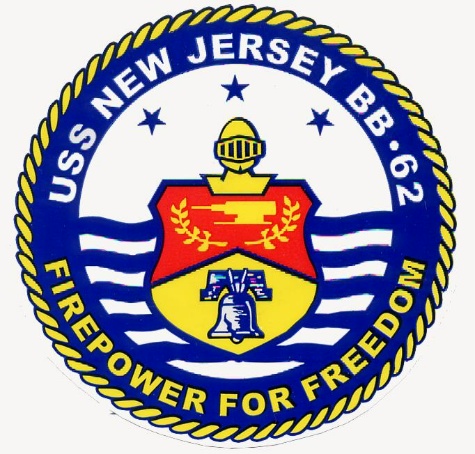 |
.gif) |
| WW2 Era Coast of arms |
Korean War Coast of arms |
Vietnam war Coast of arms |
Final Coast of arms |
Introduction
He make part from the Iowa class battleships class of six Battleship ordered by theUS Navy in 1939 and 1940 to escort the Carriers task Force
They operate in the PTO during WW2. Four were completed two more were laid down, but they were cancelled
prior to completion, and eventually scrapped.
The Iowa class was the ultimate in the evolution and the final class of U.S. battleships to be built After the battle ship was not the most important naval vessel of a fleet he was upon orders of the Aircraft Carrier to protect him tDuring WW2 they defended aircraft carriers and shelled Japanese positions before being placed in reserve at the end of the war
After WW 2 battleships were recalled for action during Korean War to provided artillery support In 1968, some scenario.They shelled North Vietnam targets
In the 1980s all the four last battleships were reactivated and armed with missiles during the 1980s as part of the
600 ship Navy during the Reagan Era
They sheel on Libanon Coast Hezbollah position and in 1991, Missouri and Wisconsin fired missiles and 406 mm guns againt Iraki targets during the 1st Gulf War
All four battleships were decommissioned in the early 1990s
2 were instated to the Naval Vessel Register for maintenance in the mothball fleet
All were now museums
USS Iowa BB 61 was in San Fransico bay yet his definitve ancorage was choose
USS New Jersey BB 62 was in Camden New Jersey
USS Wisconsin BB 63dwas at Norflok Virginie in Nauticus National Maritime Center
USSMissouri BB 64 was in Pearl Harbour Hawai
The USS New Jersey (BB 16 )
.jpg) |
.jpg) |
| BB16 New Jersey 1904 |
BB 16 New Jersey 1920 |
He was the second wessel to carry the same name he was launched on December 7th 1942 in the Philadelphia Naval Shipyard and commissioned on may 23th 1943 . But first a little history of the first USS New Jersey BB 16
The first NEW JERSEY (BB-16) and he was a Virginia class pre-dreadnought launched on November 10th 1904 by Fore River shipbuilding Company, Quincy, and commissioned on May 12th 1906, He make part of the VIRGINIA class battle ship with a Displacement.of 14948 tons He was armed with 4x 12", 8x 8", 12x 6"and 4x 21
USS New Jersey's initial training in Atlantic and Caribbean waters was highlighted by her review by President Theodore Roosevelt in Oyster Bay during September 1906, and by her presence at Havana, Cuba, from September 21st through October 13th to protect American interests threatened by the Cuban Insurrection After he make part of the cruise of the Great White fleet. Commanded first by Rear Admiral Robley D. Evans, and later by Rear Admiral Charles S. Sperry, the fleet laid its course for Trinidad and Rio de Janeiro, then rounded Cape Horn. After calling in Punta Arenas; Valparaiso and Callao the battleships made a triumphant return to the United States at San Francisco.The Great White Fleet sailed on to Amoy, returned briefly to Yokohama, The battleships passed through the Suez Canal on January 4th 1909, called at Port Said, Naples and Villefranche, and left Gibraltar astern 6 February. In one of the last ceremonial acts of his presidency, Theodore Roosevelt reviewed the Great White Fleet as it went up to anchor in Hampton Roads on February 22nd 1909 . After during the Mexican political turmoil in 1912 1913 USS New Jersey was ordered to the Western Caribbean in the fall of 1913 to provide protection. After the US landing in Vera Cruz on April 1914 USS New Jersey on August 1914
Until the outbreak of WW1he returned to regular operations
During WW1 USS New Jersey made a major contribution to the expansion of the wartime Navy, training gunners and seamen recruits in Chesapeake Bay.
After the Armistice, he serve for the repratiation of the AEF from france . At every rotation he brought 5000 members at HOME On August 16th 1920 USS New Jersey was decommissioned and he was sunk off Cape Hatteras on September 5th 1923 in Army bomb tests conducted by Brig. Gen. William Mitchell.
The USS New Jersey (BB62 )
The USS New Jersey BB-62, or Big J or Black Dragon is the second ship of the United States Navy to be named with his name Among all the four Iowa-class battleships,USS New Jersey is notable for having earned the most Battle stars for her combat actions ( WW2 Korean War Vietnam )
The Iowa class
She his the last US BB class . The construction of Battle ship are influenced by theories and lessons of the story The apparition of the HMS Dreadnought, in 1906 was a clap of thunder in the sphere of militaries navies the Battle of Jutland was an other lesson with heavies losses in the Royal Navy (3 Battle cruisers ) this losses are to an inadequate armor protection. The same problem with the HMS Hood /vs KMS Bismark As a result of this loss, naval architects for the world's major naval powers set out to improve their naval armor to prevent such a loss from recurring, leading to so-called "Post-Jutland" hull designs with greater armor protection.
So to reduce the arme race the Washington and London Naval Treaties were signed The attending nations agreed to abandon ongoing construction of battleships and battlecruisers, to limit ships to 35,000 tons, to cap armament at 406 mm cannons, and to limit replacement tonnag The London Naval Treaty banned construction of new battleships through 1937.These treaties stopped U.S. construction of battleships since April 1937,
And for the US Navy construction wher is the problem of the Panama Canal With is 34m width the Navy drafted plans for a battleship class with a maximum beam of 108 ft (33 m), with a waterline length of 262 m, permitting a maximum speed of 34.9 knots (64.6 km/h)
But the engineers were not be bound hand and foot by the treaty and they follow they research job
above all studies upon various hulls forms and propellers
In 1936, after the Japan's withdrawal from the Second London Naval Conference, USA government set up the Battleship desing Advisory Board ( BDAB) charged to develop new battleship designs with ,
Captain Allan Chantry , manager of the Philadelphia Navy Yard’s Industrial Development father of the BB North Carolina and south Dakota
The construction of the other navy are anlysed with meticulousness above all the Japan projects
The USA began to building USS North Carolina and South Dakota-class battleships in the late 1930s.
Iowa class Design
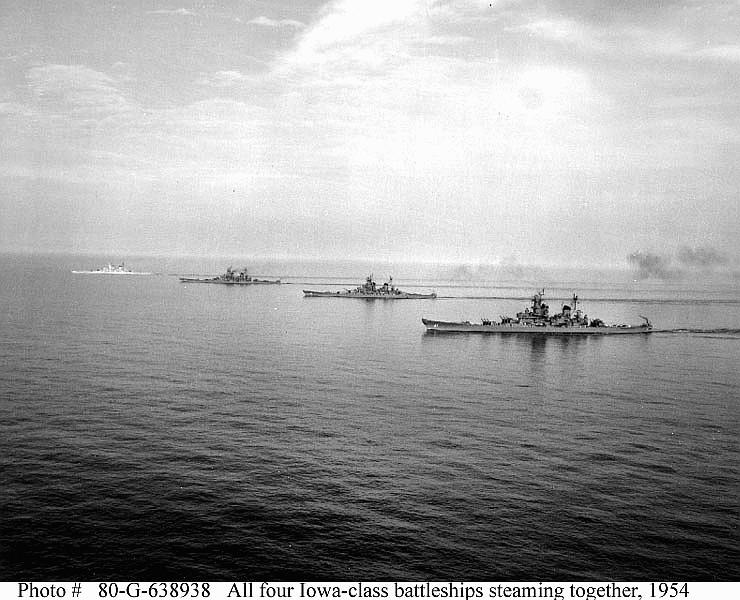 |
An battleship must to have performances in speed, armor, or firepower The designers of the Iowa class attempted to produce a design that made no such sacrifices.
A new BB ship was planed after with 45,000 tons standard displacement, the Iowa class were the first new BB of WWa2 whose design was not encumbered by treaty limits. They intended to protect aircraft carriers The Essex class carriers required escorts that could steam with the carriers at a comparable speed, against the threat of similar Japanese BB or big-gun ships of the Yamato Class as well as to form a "fast wing" for the traditional battle line. And the Iowa class are able to provide this protection
The four vesels of the Iowas were the last battleships ever completed for U.S. Navy service.
Built under FY 1940 (BB 61 & 62) and 1941 (BB 63-66) the Iowa class were much longer, more powerfully engined and considerably faster than the preceding classe But in the same moment United States Congress had allocated only enough money to construct the first two ships (Iowa and New Jersey). Congress had not expected the Iowa class to be so costly; with a price tag of $125 million per ship the Iowas were 60% more expensive than the previously authorized battleship
.gif) |
But some policy analysts would converting the hulls into aircraft carriers a la Saratoga (CV-2) and Lexington (CV-3).Their plan called for the battleships to be converted into a similar size carrier as the Essex-class. But, Chief of Naval Operations Adm. Ernest
King and Congress' position on the funding for the Iowa class changed after the defeat of france in June 1940 Roosevelt demanded that Congress fund a two-ocean navy to meet the threats posed in the Atlantic and Pacific Oceans.Congress found money to complete the last four Iowa-class battleships
The Iowa class design was conceived in an era of crisis. USA were not officially in war and thet faced some major problems with its ship inventory. Much of war planning is based on “what if?” scenarios. And lot of Navies , friend and foe alike outclassed the US Navy’s battleship in the late 1930’s,
USa faced two specific problems: Germany with the Tirpitz and Bismark and above all the Japa with the IJN Yamato.
At this monsters this two nations were very busy building a series of new heavy cruisers and “pocket” battleships to back up the larger capital ships. Japan had just finished a class of cruisers, called the Kongo-class, capable of 30 knots . Germany and Japan laugh at the international treaties
USa respect the limitations established in the various arms limitation treaties. As a result, the only upgrade in design for the North Carolina and South Dakotas was an increase in armament from 380mm or 14-inch guns to Mk6 406 mm or 16-inch/45 caliber rifled guns.
With the decision made to design and build a new class of battleships, the numbers game began. The design of any battleship had to consider three basic factors:
speed, firepower, and armor.
The convention said that if the designer had to sacrifice performance in one category in order to gain performance in the other two.
BDAB was faced with the task of building a battleship class capable of chasing down and defeating anything it might meet. But BDAB bhas 2 major problems Thes international treaty restrictions, and the the Panama Canal So the new 33.52m at the beam.
Armament
BDAB had four options.
1st) match the Yamato (the biggest battleship facing the Americans) gun for gun with the Mk1 of 457mm or 18-inch/45 caliber rifle. This monster gun, the largest ever assembled in America, could fire a two-ton shell several miles that could penetrate 40 cms of armor.
Problems the speed was reduce to 22 kmots in case of use of nine Mk1s and the delay to built the ship was increased
2nd ) dual mounted 18-inch guns. While it might have saved some space and displacement, BDAB quickly dismissed this option. It would have required additional design and test work, being that there was no dual mount available.
3rd ) Use of the 406mmr 16-inch/45 caliber rifle used on USS North Carolina and South Dakota
4th) Use of the newer Mk7406 mm 16-inch/50 caliber rifle who was a good compromise of firepower, size, weight, and cost.
The Mk7 had several advantages During a rapid-fire situation, Mk7 could fire twice as fast as the 457mm 18-inch guns and would give the new class a further reach than the older Mk6 406mm 16-inch rifles. Additionally, the turrets for the Mk7 could be given sufficient armor to withstand an incoming 406mm inch shell, unlike the Mk1 18-inch guns.Fully equipped, each of BB Ship in triple mounted turrets weighed over 2,100 tons. At 6,300 tons, these three turrets alone made up about 12% of the ship’s displacement.
WW2 battleships have an other problem counter the air attacks. Modern battleship could carrier in addition of this amin artillery smaller guns. These ships were to have 20 127mm 5inch/38 caliber in dual purpose guns mounted in 10 turrets. These guns could put up 22 shells per minute per gun in the anti-aircraft role.
Even though the keels had already been laid, designers continued to tweak the design and lessons of the battlefield and applied them to new weapon designs.
2 lessons were studies The Taranto Raid when antique Swordfish bi-plane on torpedo bomber role knock out the Italian battlefleet in 1940 an bis reptita in 1941 with the end of the Bismark The second event was the Japanese air attack on Pearl Harbor on December 7th 1941.This lesson with the own battle experience constrain USA to reinforced the protection with more secondary guns and smaller AA guns. Additional guns were also placed 20X Mk2 quad mounted 40mm Bofor , 29X 20mm single mounted guns, and several .12.7mm. The problem with adding such an impressive array of guns was that the ship would require an additional 1,900 sailors to an already cramped ship. Despite this problem, the risk of air attack was too great and the additional guns, and sailors, were ordered.
Armor
The second basic factor, was armor. The armor scheme was the same but thicker of the armor used on North Carolina and South Dakota This armor could, in theory, stop a 406mm shell coming in at a 45° angle Nickel-steel was used to manufacture the armor Two plants, Bethehelm Steel’s main mill in Bethehelm, PA and Luken Steel’s Coatsville mill just ouside Phildadelphia, manufactured most of the armor plating. For the turret plate, however, a special forge was constructed just for the Iowa-class at the Charleston Ordnance Works in Charleston, WV.
Propulsion
BDAB wanted the new class of warships to steam at 33-knots. This would make them the fastest battleships ever built. They would be four knots faster than Bismarck, eight knots faster than the Yamato, and just as fast as any potential commerce raider. To achieve such speed, the hull of Iowa-class ships is over 200 feet longer than the North Carolina-class and South Dakota-class.
Additionally, workers installed the largest conventional engineering plant ever assembled on US Navy ships.12 Foster Wheeler boilers along with Westinghouse manufactured engines were used . Together, the boilers and engines turned out over 220,000 ship horsepower on four shafts This new class ship like the IJN Yamato have to increase speed, a bulbous bow
The BB62 At war
WW2
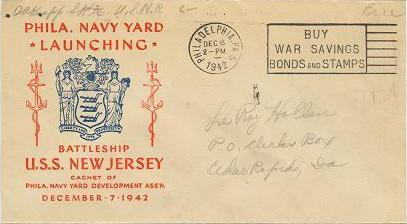 |
| Internet |
USS New Jersey was orderd on june 1st 1939 laid down on September 16th 1940 launched on December 7th 1942 aon commissioned on mai 23rd 1943 he complete his equipement and train in e Western Atlantic and Caribbean. On January 7th 1944she passed through the Panama Canal for Funafuti, Ellice Islands. On January Task Group 58.2USS. New Jersey screened the carriers from arial enemy attack during the operations against Kwajalein and Eniwetok from 29 January to 2 February, softening up the latter for its invasion and supporting the troops who landed 31 January.
He was the flagship of Admiral Spruance Fifth Fleet,on February 4th in Majuro Lagoon Her first action as a flagship was two-day surface and air strike against the Japanese fleet base on Truk in the Carolines. This blow was coordinated with the assault on Kwajalein . On 17 and 18 February; the TF destroy a Japanese
Between 17 March and 10 April 1944 USS New Jersey rejoin Task Group 58.2 for a strike against shipping in the Palaus, and bombarded Woleai
On April/May 1944, operation to support the invasion of New Guinea, and bombing of Truk
On june in previsionof the marshall invasion USS New Jersey was put on June 6th 1944 at the disposition of Admiral Mitscher's Task Force. Bombing of Saipan and Tinian
USS New Jersey was present at the Marianas Turkey Shoot on June 19th 1944 . The anti- aircraft fire of New Jersey and the other screening ships proved virtually impenetrable. Only two American ships were damaged, and those but slightly. the Japanese lost some 400 planes. 3 air craft carriers
 |
| 1945 |
USS New Jersey's final contribution to the conquest of the Marianas was strikes on Guam and the Palaus from which he sailed for Pearl Harbor, arriving 9 August.
On August 24th 1944 he becom flagship of the Third Fleet of Admiral Halsey based at Ulithi.
In September the targets were the southern Philippines, and in October raids to destroy enemy air power based on Okinawa and Formosa were begun in preparation for the Leyte landings on October 20th 1944.
On october 1944 USS New Jersey was present at the Battle for Leyte Gulf against the desperate, and suicidal, last great sortie of the Imperial Japanese Navy.
USS New Jersey rejoined fast carriers near San Bernadino on October 27th 1944 for strikes on central and southern Luzon. The TF was under heavy suicide attack. The US Fleet suffered heavy
In December,USS New Jersey support USS Lexington (CV 16) task group for air attacks on Luzon She return to Ulithi on Christmas Eve to be met by Fleet Admiral Chester W. Nimitz.
On January 1945 he guard the carriers in their strikes on Formosa, Okinawa, and Luzon, on the coast of Indo-China, Hong Kong, Swatow and Amoy, and again on Formosa and Okinawa.
In support of the assault on Iwo Jima, New Jersey screened the USS Essex (CV-9) .USS New Jersey was directly engaged in the conquest of Okinawa from 14 March until 16 April 1945.
During the final months of the war, New Jersey was overhauled at Puget Sound Naval Shipyard,
On August 14th 1945 he became flagship of the Fifth Fleet of the Admiral Spruance. He arrive in Tokoy bay on September 17 th 1945 where he serve as flagship until January 28th 1946
He return to San Fransico on February 10th 1946
Between 7 June and 26 August 1946, New Jersey formed part of the first training squadron to cruise Northern European waters.USS New Jersey was inactivated at the New York Naval Shipyard.and decommissioned on June 30th 1948.
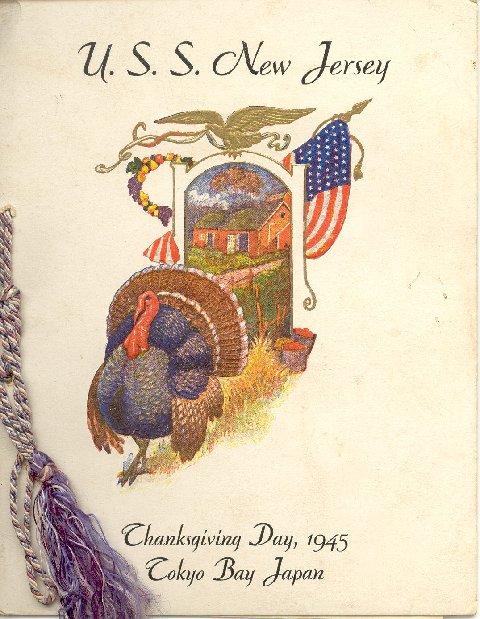 |
Korean War
.gif) |
 |
USS New Jersey was recommissioned on November 21st 1950 He sailed from Japan and he arrive off the east coast of Korea on May 17th 1951
During her two tours of duty in Korean waters New Jersey's guns was used for shore bombardment during Korean War in direct support to United Nations troops; or in preparation for ground actions, in interdicting Communist supply and communication routes, or in destroying supplies and troop positions
Relieved as flagship at Yokosuka by USS Wisconsin New Jersey reach Norfolk on November 14th 1955 After 2 year of cruise in mediterranean sea or Atlantic Ocean USS Nex Jersey was decommissioned and placed in reserve on August 21st 1957.
Vietnam War
New Jersey's third career began on Apri 6th l 1968 when he was recommissioned at Philadelphia Naval Shipyard,Fitted with improved electronics and a helicopter landing pad
Her 406mm guns,were wait in Vietnam where targets in Vietnam are inaccessible to smaller naval guns and, in foul weather, safe from aerial attack.
USS New Jersey,go away on May 16th 1968 USS New Jersey touched at Pearl Harbor and Subic Bay before and arrive on September 25th 1968 along the Vietnamese coast. For his first tour 3000 shells were shoot against Communist targets in and near the so-called Demilitarized Zone (DMZ)
On December 17th 1969 USS New Jersey was decommisionend
Reagan Area
 |
| December 28th 1982 |
USS New Jersey was recommissioned December 28th 1982. He was modernized, with the installation of 16 Harpoon missiles,and 32 Tomahawk missiles and four Phalanx CIWS mounts
In 1983, during the civil war in Lebanon, U.S. naval forces fired rounds in support of Lebanese Army forces
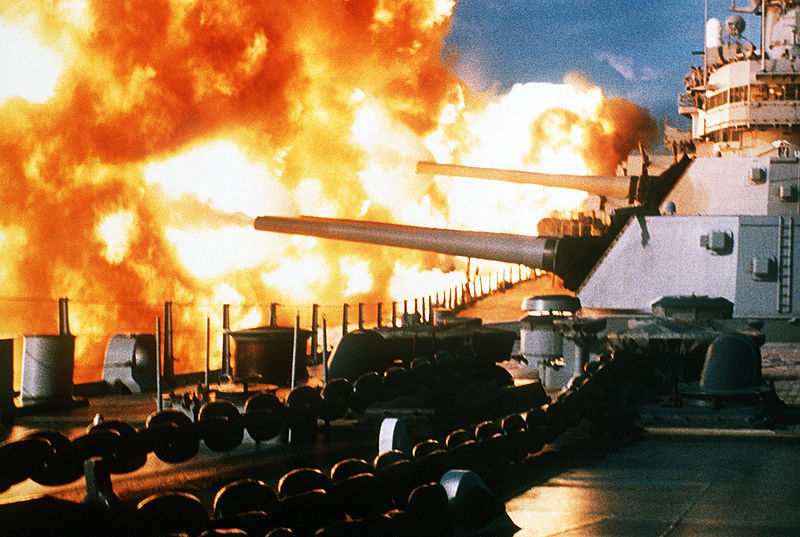 |
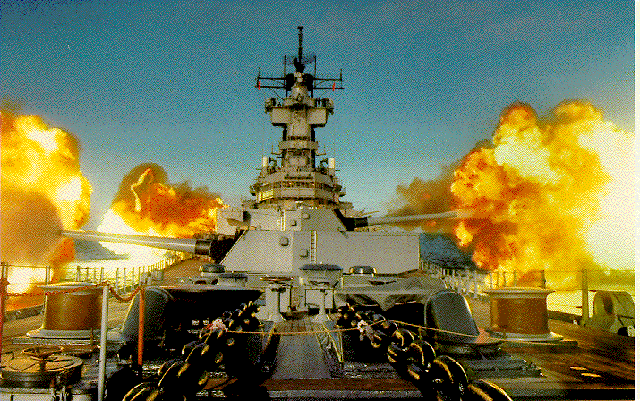 |
| Beirout under Bombing |
Beirout under Bombing |
On February 8th 1984, New Jersey fired almost 300 shells at Druze and Syrian positions in the Bekka Valley east of Beirut. This projectiles rained down on a Syrian command post, killing the general commanding Syrian forces in Lebanon and several other senior officers. This was the heaviest shore bombardment since the Korean War.
On February 8th 1991 USS New Jersey was decommissioned The decision to decommission New Jersey robbed the battleship of the chance to participateat the operation desert storm Only the USS Missouri and Wisconsin were present USS Iowa was in reparation after the explosion of a turret
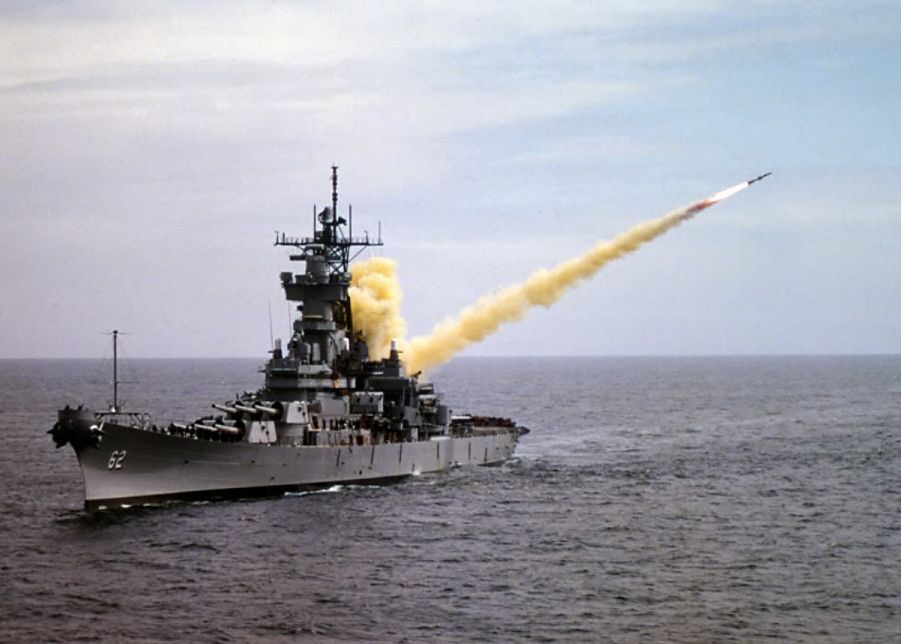 |
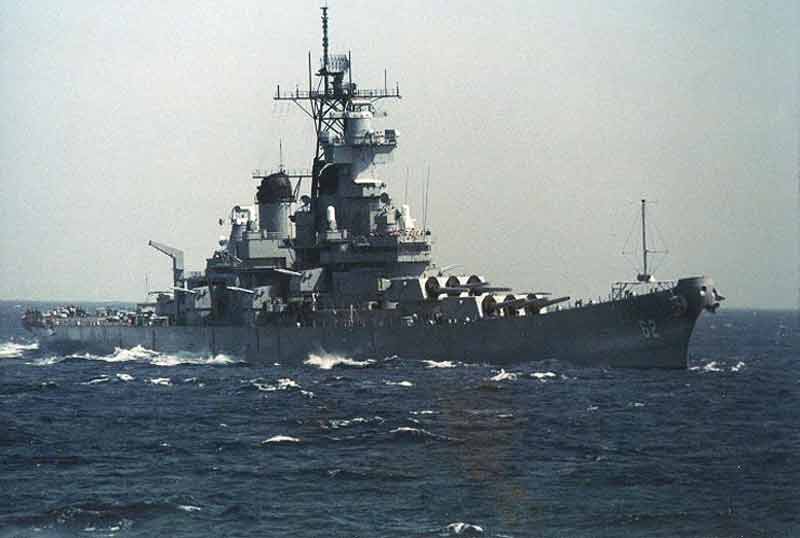 |
| 1990 |
1990 |
On January 20th 2000, Secretary of the Navy Richard Danzig announced that the battleship would be donated to Home Port Alliance of Camden, N.J., for use as a museum but he would be ready to action
"Rest well, yet sleep lightly; and hear the call, if again sounded, to provide fire power for freedom."
USS New Jersey is berthed on the Delaware River in Camden, NJ. She is docked at a newly built pier adjacent to the Tweeter Entertainment Center, just south of the Aquarium
USS New Jersey Awards
USS New Jersey earned the Navy Unit Commendation for Vietnam service. She has received nine battle stars for World War II; four for the Korean conflict; and two for Vietnam, and three Campaign Stars for service off Beirut, Lebanon and service in the Persian Gulf, prior to Operation Desert Storm. With a total of Nineteen Battle and Campaign Stars, New Jersey is America's most decorated battleship and surviving warship.
Specifications (Final )
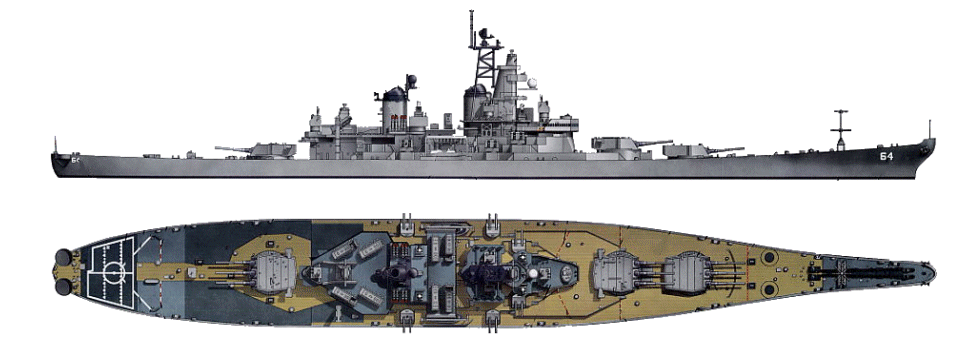 |
Builders
New York Navy Yard -- BB 61, 63
Philadelphia Navy Yard -- BB 62, 64
Displacement
Light Displacement: 45231 tons
Full Displacement: 57271 tons
65 officers
1,450 enlisted
58 Marines
Length Overall Length: 260.5 m
Beam Extreme Beam: 33.32m
Draft Maximum Navigational Draft: 11.58m
Power Plant Eight boilers, four geared turbines, four shafts,
Max Speed 35 knots horsepower 212,000 HP
Armament 1990
9 X 406mm Mk7 16 inch /50 caliber
12X Mk 28 127 mm 5-inch / 38 caliber guns
4 XPhalanx CIWS 20mm Mk 15
32 Tomawak ASM/Lam in 8 armored box launchers
16 Harpoon ASL 4 in quad cell launchers
Radar Combat Systems
SPS 49 Air sear Radar
SPS67 Surface Search radar
4 Mk37 Gun Fire Control
2 Mk38 Gun Direction
1 Mk40 Gun Director
1 SPQ-9 [BB-61]
Aircraft None embarked
landing area and unhangared parking area
for 4SH3 or SH 60
Walk Around HERE







.jpg)
.jpg)

.gif)
.jpg)
.jpg)

.gif)



.gif)





